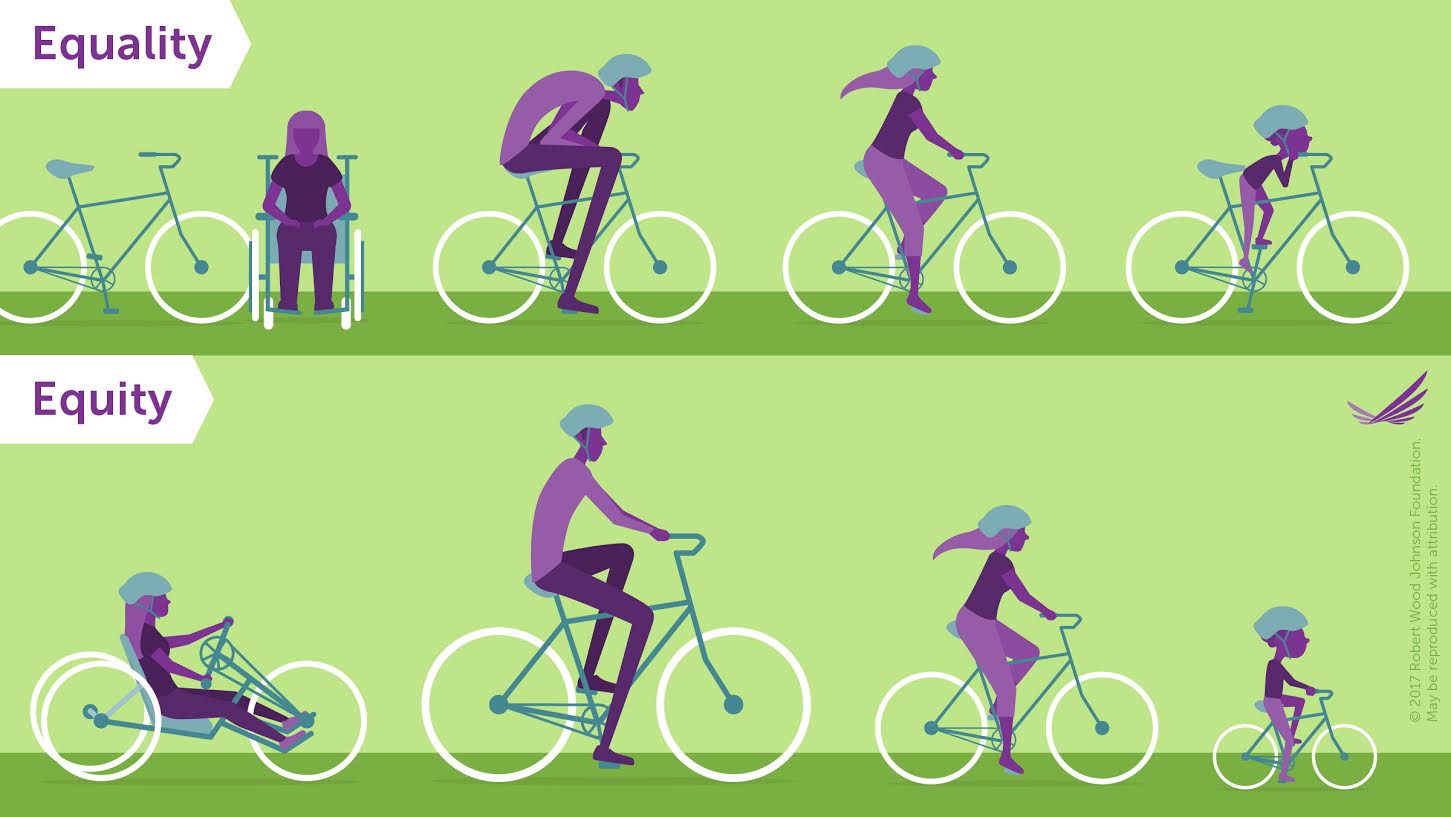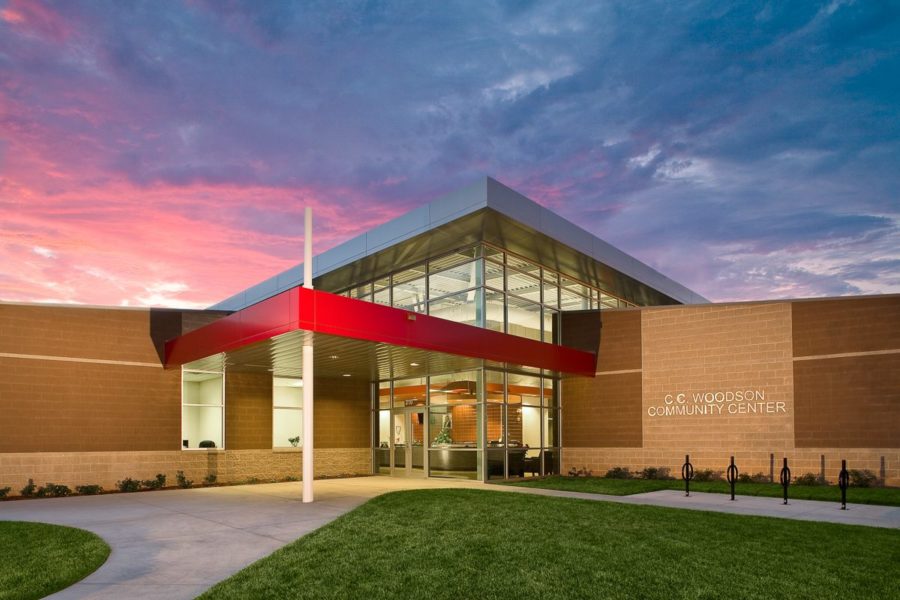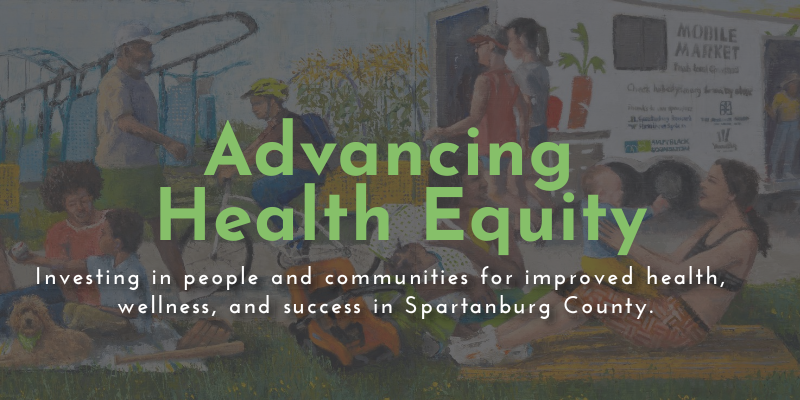Advancing Health Equity in Spartanburg
The Mary Black Foundation believes that health and wellness are basic human rights.
In 2018, the Foundation adopted a health equity statement:
Health equity exists when all people have access to opportunities to thrive, both physically and mentally, and no one is limited in achieving health and wellness because of their race, ethnicity, nationality, gender, ability, sexual orientation, age, income, or zip code.
However, we quickly realized that having a statement was not sufficient enough. We needed a framework to guide our work. In 2020, the Foundation’s Program Directors, Keisha Gray and Natalia Valenzuela Swanson sat down to research and create a framework that would guide us in achieving our mission to invest in people and communities for improved health, wellness, and success in Spartanburg County.

The Framework
To advance health equity, Spartanburg will need to ensure it has: (1) high quality education & employment, (2) safe & supportive neighborhoods, and (3) accessible, affordable, & culturally relevant health care.

Framework in Action
While no one organization can achieve health equity alone, the Mary Black Foundation uses its resources- grants and impact investments, advocacy, capacity building, technical assistance, convening, and strategic alliances- to advance health equity. Below are examples of how the Mary Black Foundation is working to achieve health equity.

Achieving Health Equity in Our Community
In each of the three buckets of Mary Black Foundation’s Health Equity Framework, there are different sub-categories. These sub-categories are more specific things that a community needs to have to ensure all people can achieve health and wellness.
Parks and Open Spaces
In the Safe & Supportive Neighborhoods bucket, the first sub-category is Parks and Open Spaces. Parks and open spaces improve our physical and psychological health, strengthen our communities, and make our neighborhoods more attractive places to live and work. Numerous studies have shown the social, environmental, economic, and health benefits parks, recreation centers, and open spaces bring to communities and its people.
Framework in Action
A great example of a community coming together to fulfil a need for safe and supportive recreation is the C.C. Woodson Community Center.
In 2009 the City of Spartanburg set a goal to renovate the C.C. Woodson Community Center in the Southside of Spartanburg. This project started as a $1.8 million renovation of the former facility, but due to site restrictions, council decided to build a new center. The new project now needed to raise over $6 million to complete.

How C.C. Woodson was Funded
In 2004, the Spartanburg Housing Authority (SHA) received a $20 million HOPE VI grant from HUD to renovate the Phyllis Goins Apartments. The HOPE VI plan included the construction of 511 housing units and the revitalization of nine neighborhoods, four of which are located in the Southside near C.C. Woodson Community Center. As part of HOPE VI, HUD requires SHA to provide a community center in the revitalized area. Rather than constructing a new center, SHA agreed to partner with the City of Spartanburg to renovate C.C. Woodson.
By 2006, several entities came together to fund the renovation of the C.C. Woodson Community Center. The Spartanburg Housing Authority contributed $800,000 of their HOPE VI funds. The City of Spartanburg provided approximately $1.3 million in in-kind and cash support. A state grant of $100,000 was provided. SunTrust (CDC) provided $2,150,000. And lastly, Mary Black Foundation provided a grant of $700,000.
In addition to providing a $700,000 grant to renovate the C.C. Woodson Center, the Foundation made its first impact investment by providing a $1.2M loan to the City of Spartanburg for this project.
Impact Investing refers to the use of a foundation’s invested capital to generate social and financial returns. Unlike grantmaking, these investments are expected to be paid back, allowing for the funds to be recycled back into the community in a way that cannot be done with traditional grants.
The Foundation’s grant and loan allowed the City of Spartanburg to leverage $4.4M in additional funding for the project.
Impact of this Space
The C.C. Woodson Community Center’s 27,000-square-foot facility offers a variety of services and activities for people of all ages and interests. With an expert staff of parks and recreation professionals, C.C. Woodson offers programming year-round. From youth football to pickup basketball for all ages, C.C. Woodson is a great place for recreational sports.
C.C. Woodson’s swimming pool is staffed with lifeguards and is open Memorial Day through Labor Day. The facility also includes an exercise room with a full complement of strength training and exercise machines.
According to the City of Spartanburg’s website, this center offers:
- A full court basketball gym
- Outdoor pool
- Community Room
- Learning Center
- Senior Lounge
- Teen Center
- Health & Wellness Room
In addition to recreational opportunities, meeting and conference rooms are also available for use by the public and community groups for a nominal fee.
Advancing Health Equity in Spartanburg
While C.C. Woodson Community Center is one example of how Spartanburg is advancing health equity for its people through parks and open spaces, there are many others. Examples include:
- Mary Black Foundation Rail Trail
- The Dan Trail System currently underway through leadership of PAL: Play. Advocate. Live Well.
- Renovation and creation of neighborhood parks
- Construction of the T.K. Gregg Community Center
Learn More
Visit Mary Black Foundation’s website to learn more about our Health Equity Framework and examples of ways the Foundation has used grant funding and impact investments to further its mission.

